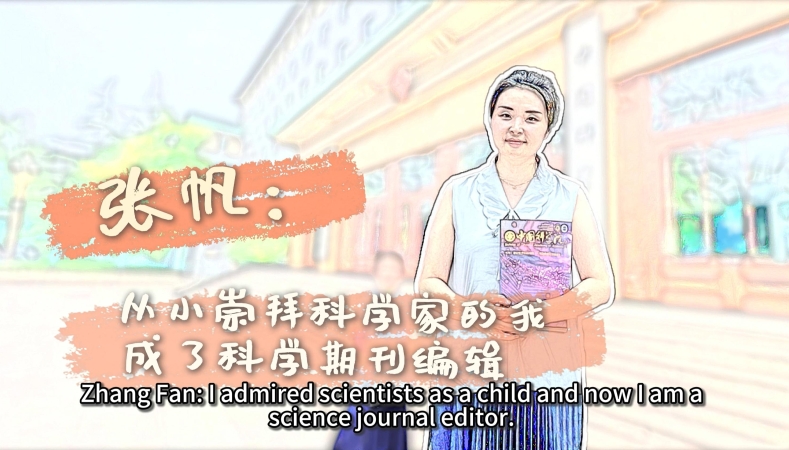AIPP Acknowledges China's Scientific Contributions
By BI Weizi
"We firmly believe that science is inherently cooperative. Scientific collaboration is a very peaceful and positive exercise that creates mutual understanding," Alexandra Vance, CEO of the American Institute of Physics Publishing (AIPP), told Science and Technology Daily on September 7.

Alexandra Vance. (COURTESY PHOTO)
AIPP publishes current advanced and foundational research covering the breadth and depth of the physical sciences, whose mission is to promote and serve the physical sciences for the benefit of humankind.
"Academic publishing plays a pivotal role in fostering robust scientific communication between China and the world. It truly serves as a bridge through which valuable research findings, innovative ideas and intellectual achievements can be shared, disseminated and accessed by global audience," said Vance, noting that the world benefits from access to China's rapidly advancing research landscape, which covers an ever-widening range of disciplines, particularly in the physical sciences.
The compound annual growth rate for physical science publications worldwide from 2013 to 2022 was 8.3 percent, while the rate in China was an impressive 15 percent. In the AIP Publishing portfolio, a remarkable 35 percent increase in publications authored by Chinese researchers has been observed over the past decade. "This rise is a testament to China's commitment to research and development, increased funding and the expansion of research infrastructure," she said.
According to the Nature Index data recorded since 2014, China has become the largest contributor of research in major science journals, replacing the U.S. as the top contributor for the first time in 2022.
In addition to quantitative growth, the overall quality of research from China has improved. More papers are appearing in prestigious international journals, with increased citations, higher impact factors and greater recognition within the scientific community. "This increase in quality is critical to establishing China's position as a hub for cutting-edge research, fostering international collaboration and driving innovation," said Vance.
"In the past seven years, China has accelerated its research in fluid mechanics. And it's been in the last seven years that I've watched Chinese scientists become the leading contributors to Physics of Fluids, a highly cited, well-known journal in the field of fluid mechanics. The quality of their research has improved our journal from an impact factor of 2.0 to over 4, which is just one indicator of the increasing quality of Chinese research," said Professor Alan Jeffrey Giacomin, Editor-in-Chief of Physics of Fluids since 2016.

Professor Alan Jeffrey Giacomin. (COURTESY PHOTO)
He also noted that China is contributing to every section of the journal, and its contributions are as strong in fundamental fluid mechanics as they are in applied fluid mechanics. "China is firing on all cylinders, to use an engine analogy, when it comes to physics research today," he said.
In addition to the rapidly increasing number of publications by Chinese scientists, another factor contributing to China's emergence as an academic powerhouse is the increase in Chinese editors and editors-in-chief at top international journals.
According to Vance, from 2021 to 2022, the number of Chinese researchers on AIP Publishing's editorial team increased from 64 to 86. "Last year, we appointed an editor-in-chief from China, Bo Wang from the Beijing Institute of Technology, to APL Materials, which is very important because it was the first such appointment in AIP Publishing's 90-year history," she said.
The expertise of Chinese researchers is being highlighted and the impact of the Chinese scientific community as part of the global scientific community is being continuously expanded. The central role of international cooperation, bringing different perspectives, methods and insights into the scientific arena, is becoming more evident.
"International cooperation reflects real friendships that are formed across international boundaries. There are interesting stories behind these papers. When I see Chinese names in parentheses beside English names for international cooperation, I see something far more beautiful underneath the paper," said Giacomin, expressing strong confidence in the research community to continue the spirit of collaboration.


